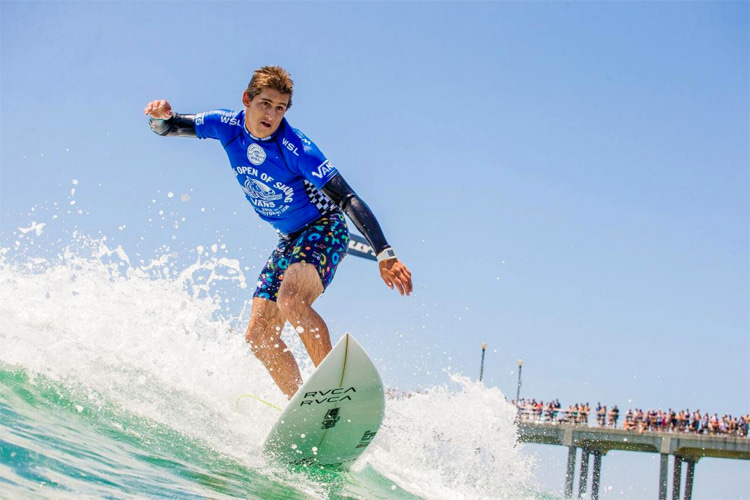Yes, it's not the most elegant move surfing offers, but it could be useful on several occasions. Here's when and how to make good use of the Huntington hop.
The Huntington hop is a functional surfing technique that allows surfers to get past a small and/or mushy wave without losing its speed and momentum.
When well executed, the Huntington hop will extend a ride and may even get the surfer into a clean wave or bigger section a few yards ahead.
The move is often performed on shortboards that don't have enough flotation surface to glide across fat and slow areas of a wave - you rarely do them while riding a longboard.
In other words, the Huntington hop is a wave-riding technique that generates speed thanks to the hopping motion created by the surfer.
The more you pump the surfboard, the greater the chances of getting past the low-speed zone.
Interestingly, the speed-generating technique is often performed by beginner surfers on the wrong occasions just because they've watched pro surfers doing it.
So, because it never looks particularly good, make sure only to do it when you really need to, i.e., to generate speed and go through the most challenging ripples.
Actually, when performed at the right moment, the Huntington hop makes the difference between extending a ride and finishing it early or even between a superbly ridden wave and a fair ride.
Huntington Hop 101
Are you missing the good section of a wave by a couple of yards? Are you far away from the wave's pocket and power source? Can you spot a potential reform?
Here's how to hop on a dying wave and make it to the inside section:
- As soon as you start losing speed, eye where you want to be;
- Bend your body slightly forward by putting more pressure and weight on your front foot;
- Kick your back foot to raise the nose of your surfboard;
- Immediately apply pressure on your front foot;
- Repeat the last two steps consecutively while lowering your shoulders in sync with the legs movement;
- Keep a low stance until you feel you've regained natural thrust or reconnected with the desired section;
- Reconnect to the new power source of the wave and resume normal riding;
The Huntington hop is similar to skateboarding's tic-tacs.
In the end, you'll be doing small S-turns and jumps over the water that will eventually transform into "artificially-generated" speed.
So, your body and board create movement, not the wave's energy.
The technique's name is probably inspired by the hops and weaves professional surfers have to execute to maximize a wave's potential and reforming characteristics during the US Open of Surfing in Huntington Beach.
When the tide fills in, it's hard to get the surfboard's speed up in order to generate or maintain momentum and get through the fat zone and into the famous shore break wave.
Last but not least: remember that hopping up and down in the hope of milking the wave all the way to the inside doesn't work 100 percent of the time.
So, always think twice if it's really worth it - the ocean is not necessarily a gym, and the whitewater sometimes wins.
Still not happy? Get a board with more volume, and you should be fine.
